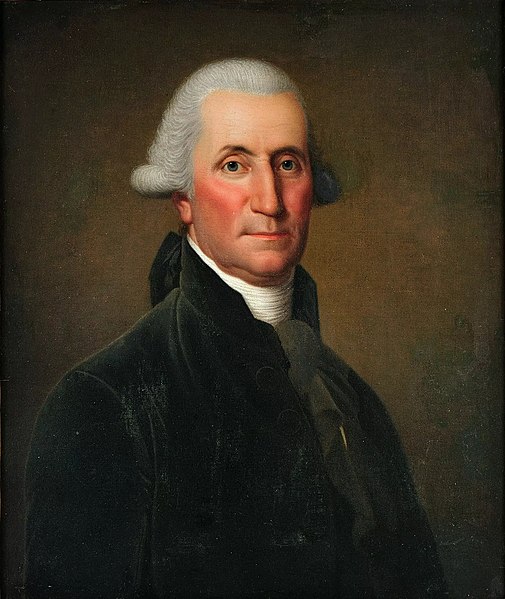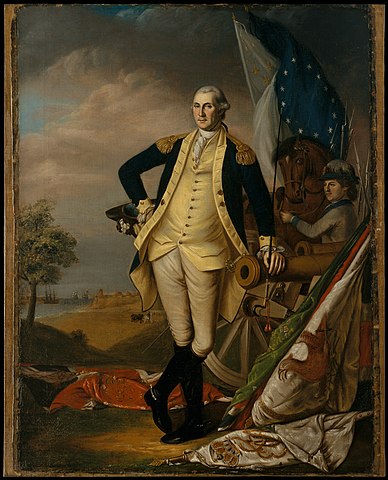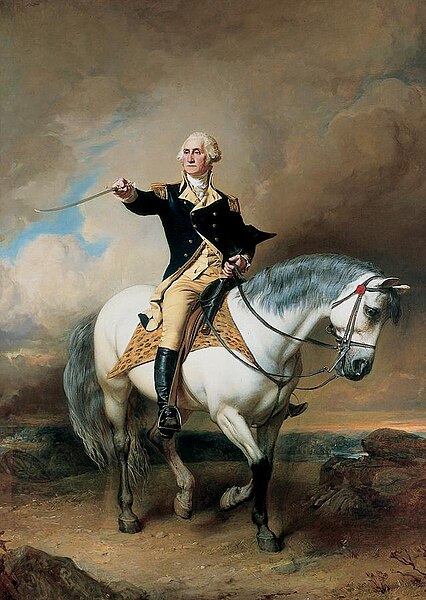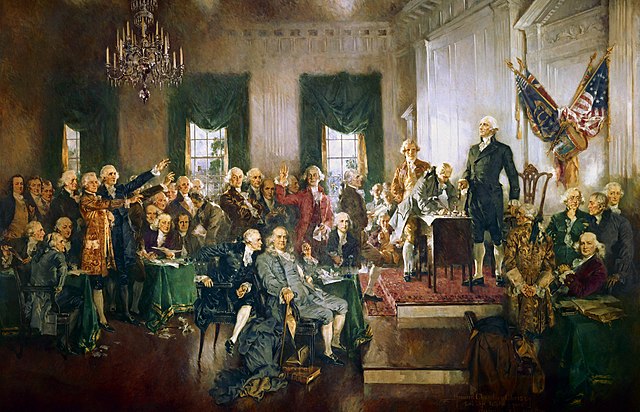George Washington, born on February 22, 1732, in Westmoreland County, Virginia, is a towering figure in American history. He is widely regarded as the “Father of His Country” for his pivotal role in the founding of the United States.
From his early experiences as a Virginia planter to his leadership during the American Revolution and his two terms as the nation’s first President, Washington’s life is a testament to his unwavering dedication to the principles of liberty, democracy, and the fledgling American nation.
In this overview, we’ll explore key milestones and contributions in George Washington’s remarkable life.
| Year | Event |
|---|---|
| 1732 | George Washington is born in Westmoreland County, Virginia. |
| 1751 | Washington’s father dies, and George inherits the family estate of Mount Vernon. |
| 1753 | Washington is appointed as a major in the Virginia militia and sent on a mission to deliver a message to the French in the Ohio Valley. |
| 1754 | Washington’s troops engage in a skirmish with French forces at Fort Necessity, marking the beginning of the French and Indian War. |
| 1755 | Washington serves as an aide-de-camp to British General Edward Braddock during a disastrous campaign against the French and their Native American allies. |
| 1759 | Washington marries Martha Dandridge Custis, a wealthy widow. |
| 1775 | The American Revolution begins, and Washington is appointed as the Commander-in-Chief of the Continental Army. |
| 1776 | The Declaration of Independence is adopted, and Washington’s army faces significant challenges during the early years of the war. |
| 1781 | Washington’s forces, with the help of French allies, achieve a decisive victory at the Battle of Yorktown, effectively ending the Revolutionary War. |
| 1783 | The Treaty of Paris is signed, officially recognizing the independence of the United States from Great Britain. |
| 1787 | Washington presides over the Constitutional Convention in Philadelphia and is elected as its president. |
| 1789 | George Washington is unanimously elected as the first President of the United States. |
| 1791 | The Bill of Rights is ratified, adding the first ten amendments to the United States Constitution. |
| 1792 | Washington is reelected for a second term as President. |
| 1796 | Washington declines to seek a third term and voluntarily steps down from the presidency. |
| 1799 | On December 14, George Washington dies at Mount Vernon. |
Timeline of George Washington
1732: George Washington is born in Westmoreland County, Virginia.
George Washington was born on February 22, 1732, in Westmoreland County, Virginia. He was the first child of Augustine Washington and Mary Ball Washington.
His birthplace, a plantation called Pope’s Creek Estate, is now part of George Washington Birthplace National Monument.

1751: Washington’s father dies, and George inherits the family estate of Mount Vernon.
In 1751, when George was just 19 years old, his father, Augustine Washington, passed away. This event had a significant impact on George’s life. He inherited the family estate of Mount Vernon, which was located along the Potomac River in Virginia.
Over the years, George Washington would expand and improve Mount Vernon, turning it into a prosperous and well-known plantation.
1753: Washington is appointed as a major in the Virginia militia and sent on a mission to deliver a message to the French in the Ohio Valley.
In 1753, tensions were rising between the British and French over control of the Ohio Valley region. Virginia’s Lieutenant Governor, Robert Dinwiddie, selected the 21-year-old George Washington for a crucial mission.
Washington was commissioned as a major in the Virginia militia and tasked with delivering a message to the French at Fort Le Boeuf, demanding that they withdraw from the Ohio Valley.
This dangerous journey through the wilderness of the frontier marked Washington’s first foray into military and diplomatic affairs, setting the stage for his future leadership in the American Revolution.
1754: Washington’s troops engage in a skirmish with French forces at Fort Necessity, marking the beginning of the French and Indian War.
In 1754, the tensions between the British and the French in North America escalated into open conflict known as the French and Indian War (part of the larger Seven Years’ War).
George Washington, then a young officer in the Virginia militia, led an expedition to establish a fort at the confluence of the Ohio and Monongahela Rivers.
This expedition led to a skirmish with French forces, known as the Battle of Jumonville Glen. This event is often considered the opening battle of the French and Indian War. Washington’s leadership during this time marked his early military experience and helped him gain recognition.

1755: Washington serves as an aide-de-camp to British General Edward Braddock during a disastrous campaign against the French and their Native American allies.
In 1755, George Washington was appointed as an aide-de-camp to British General Edward Braddock during the ill-fated Braddock Expedition. This campaign aimed to capture Fort Duquesne (now Pittsburgh) from the French.
However, the expedition ended in disaster when Braddock’s forces were ambushed and defeated by French and Native American forces in the Battle of the Monongahela. Despite the defeat, Washington’s courage and leadership during the battle earned him respect.
1759: Washington marries Martha Dandridge Custis, a wealthy widow.
On January 6, 1759, George Washington married Martha Dandridge Custis, a wealthy widow and one of the wealthiest women in Virginia.
Martha had two children from her previous marriage, and her marriage to Washington brought him considerable wealth and property, including the Custis estate, known as the “White House” plantation.
Their marriage was a partnership of love and mutual respect, and Martha played an important role in supporting George’s career and public service.
1775: The American Revolution begins, and Washington is appointed as the Commander-in-Chief of the Continental Army.
In April 1775, the American Revolution erupted with the Battles of Lexington and Concord in Massachusetts. The Second Continental Congress convened in Philadelphia, and on June 15, 1775, they appointed George Washington as the Commander-in-Chief of the Continental Army.
Washington accepted the position reluctantly but felt a strong sense of duty. He took command of the fledgling army in Boston and began the challenging task of organizing, training, and leading the troops in their fight for independence from British rule.
1776: The Declaration of Independence is adopted, and Washington’s army faces significant challenges during the early years of the war.
On July 4, 1776, the Continental Congress adopted the Declaration of Independence, declaring the 13 American colonies’ independence from Britain.
Washington’s Continental Army faced numerous challenges during the early years of the war, including a series of defeats and a lack of resources.
The famous crossing of the Delaware River and the subsequent victory at the Battle of Trenton in late 1776 provided a much-needed boost to American morale.

1781: Washington’s forces, with the help of French allies, achieve a decisive victory at the Battle of Yorktown, effectively ending the Revolutionary War.
The American Revolution continued for several years, marked by significant battles and shifting fortunes.
In 1781, with the support of French forces under General Rochambeau, Washington’s army achieved a decisive victory at the Siege of Yorktown in Virginia. British General Cornwallis surrendered, effectively ending the Revolutionary War.
This victory led to negotiations and, ultimately, the Treaty of Paris in 1783, which officially recognized American independence.
1783: The Treaty of Paris is signed, officially recognizing the independence of the United States from Great Britain.
On September 3, 1783, the Treaty of Paris was signed, formally ending the American Revolutionary War.
The treaty recognized the United States as an independent nation with boundaries extending to the Mississippi River to the west, Canada to the north, and Spanish Florida to the south.
George Washington played a critical role in achieving this outcome and ensuring that the principles of liberty and self-determination prevailed.
1787: Washington presides over the Constitutional Convention in Philadelphia and is elected as its president.
In 1787, a Constitutional Convention was held in Philadelphia to address the weaknesses of the Articles of Confederation, which had governed the newly independent United States since the end of the Revolutionary War.
George Washington was elected as the president of the Constitutional Convention. His presence lent prestige to the proceedings, and he played a crucial role in maintaining order and guiding the delegates toward the creation of the United States Constitution.
The Constitution, drafted during the convention, became the supreme law of the land and established the framework for the federal government.
1789: George Washington is unanimously elected as the first President of the United States.
In 1789, the new Constitution was ratified, and the first presidential election was held. George Washington was the unanimous choice of the Electoral College and was elected as the first President of the United States. His leadership and vision were seen as essential to the young nation’s stability and success.

1791: The Bill of Rights is ratified, adding the first ten amendments to the United States Constitution.
In 1791, the first ten amendments to the United States Constitution, collectively known as the Bill of Rights, were ratified. These amendments guaranteed fundamental rights and freedoms to American citizens, including freedom of speech, religion, and the right to a fair trial.
The addition of the Bill of Rights addressed concerns about protecting individual liberties and played a crucial role in securing support for the Constitution.
1792: Washington is reelected for a second term as President.
In 1792, George Washington was reelected for a second term as President of the United States.
During his first term, he had worked to establish the foundations of the federal government, including setting up the executive departments and establishing financial stability through the leadership of Secretary of the Treasury Alexander Hamilton.
His reelection reflected the nation’s confidence in his leadership and the stability of the new government.
1796: Washington declines to seek a third term and voluntarily steps down from the presidency.
In 1796, after serving two terms as President, George Washington made the historic decision not to seek a third term.
This decision was significant because it established the precedent of presidential term limits and the peaceful transition of power, a fundamental principle of American democracy.
Washington’s Farewell Address, published in newspapers, emphasized the importance of unity, avoiding political factionalism, and maintaining neutrality in foreign affairs.
1797: Washington retires to Mount Vernon and focuses on his estate.
After leaving the presidency, George Washington returned to his beloved Mount Vernon estate in Virginia. He dedicated himself to managing the extensive property, which included farming, land management, and other enterprises.
Washington’s retirement at Mount Vernon allowed him to enjoy a quieter life after many years of public service.
1798: Washington is appointed as Lieutenant General of the U.S. Army in anticipation of a possible war with France.
In response to increased tensions with France known as the “Quasi-War,” President John Adams appointed George Washington as Lieutenant General of the United States Army in 1798. This made Washington the highest-ranking military officer in the country.
Although he did not actively lead troops in the field, his appointment symbolized the nation’s confidence in his leadership during a potential crisis.
1799: On December 14, George Washington dies at Mount Vernon.
On December 14, 1799, George Washington passed away at his Mount Vernon estate at the age of 67. His death was a significant loss to the nation, and his passing was widely mourned.
Washington’s leadership and character had been instrumental in the founding and early years of the United States. He was buried at Mount Vernon, and his legacy as a military hero, statesman, and the country’s first president continues to be celebrated and honored.
